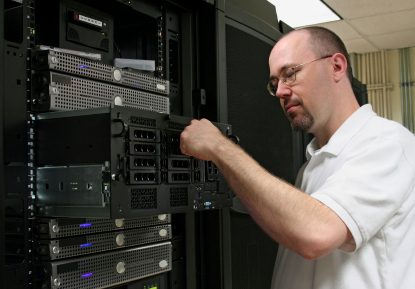Kinds of server equipment
The mainframes of the 1950s and 1960s can be viewed as the
first servers, however, the historical backdrop of servers in the advanced
sense got in progress during the 1990s with the development of the web and
rack-mounted servers. Today, servers arrive in a range of form factors and
offer different capacities, finding a home in settings from small companies to
large enterprises.

Here's an overview of some of the predominant kinds of
server equipment.
Tower servers. A
tower server lives in an upright, standalone cabinet, similar to a tower-style
PC. These servers provide the advantage of simpler cooling since they offer a
moderately low component density. They are also comparatively lower cost,
making them an option for smaller organizations on a limited budget. Tower
servers, notwithstanding, occupy more room than other server types.
Rack servers. A rack server, as its name proposes, is intended to be mounted on a server rack in
a data center. Rack servers frequently play an inside-and-out computing job in
the data center, supporting a huge number of tasks at hand.
These servers occupy less room than a tower server. Rack
servers and server racks are created to consistent size standards with the goal
that servers from various sellers can be stacked together. Normalization also
makes adding new servers or replacing old ones a direct assignment for
administrators.
Server administrator job description: Server Administrators are in charge of setting up and maintaining the servers and networks of their employers. This includes connecting workstations to the company network and monitoring the network for any potential issues.
Cable management, be that as it may, can demonstrate a challenge when maintaining rack servers, which are fastened to power supplies, networking hardware, and storage devices.
Comments
Post a Comment